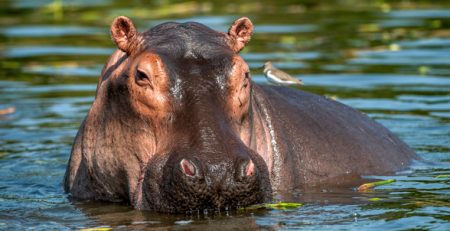The shark: the vertebrate that lives for decades without getting sick yet faces extinction
The shark is one of the most feared predators of the deep, yet despite being at the apex of the marine ecological pyramid, it is now found to be highly endangered.
Unfortunately, it is ruinously threatened by fishing and destruction of its habitat.
The shark is an animal with a cartilaginous skeleton
Sharks belong to the chondrichthyan class, that is, they have skeletons made of cartilage instead of bone.
This peculiarity makes them lighter and more agile, enabling them to swim quickly and with great efficiency.
They also have a skin lined with small scales called“placoids,” which decrease friction with the water, making them even faster.
One of the most surprising aspects of sharks is their perception system
Sharks possess specialized organs called“ampullae of Lorenzini,” which enable them to detect electric fields generated by fish and other marine animals.
This keen sense helps them locate prey even in murky or dark water.
They also possess excellent eyesight and are able to sense minimal movements in the water.
And again, they even boast excellent olfactory capabilities.
Greenland sharks and longevity genes
An international study has mapped the genome of the Greenland shark, believed to be the longest-lived vertebrate in the world, with an estimated lifespan as high as 400 years.
The secret behind their impressive lifespan lies in the presence of copies of three specific gene families (TNF, TLR, LRRFIP), a significantly higher number than shorter-lived shark species.
These genes are involved in the activation of a protein that regulates multiple aspects of immunity and also serves as a mediator of inflammatory responses.
Scholars’ research reveals Greenland sharks also possess a variant of the TP53 gene, which helps repair DNA, protecting it from the accumulation of potentially harmful mutations.
Sharks are a very diverse family
There are about 450 recognized species, and each species has unique characteristics and specific adaptations to its environment.
The best known include the great white, hammerhead, and tiger shark, but there are also lesser-known ones such as the lantern shark, which emits light and lives deep in the seas.
The size of sharks varies widely
While the great white shark can exceed 6 meters in length, the dwarf (or pygmy) shark measures only about 20 centimeters.
This variety in size is also accompanied by differences in behavior; some sharks are solitary, while others form schools.
Another interesting feature is the way they reproduce because they can be:
- oviparous (laying eggs)
- viviparous (birth of already developed offspring)
- Ovoviviparous (eggs hatch inside the female and the young are born alive)
This reproductive plasticity allows them to adapt to different environmental conditions.
Some species are active during the day, while others behave as nocturnal predators.
Sharks do not eat everything they encounter, and they are not bad either
Sharks are selective about their prey and often prefer sick or weak animals, thus playing a key role in the marine ecosystem.
Despite their bad reputation, sharks rarely attack humans.
Aggressive reactions on their part are really very rare events and always caused by misbehavior on the part of divers or unwary swimmers.
From “dangerous” to “endangered”
The very numerous species of sharks(over 460) have evolved over about 430 million years and yet in just a few decades man has almost succeeded in wiping them out.
In fact, according to recent studies, three-quarters of the existing species are at risk of extinction.
To ensure their survival, it is crucial to change the perspective on these animals: from ‘dangerous’ to ‘endangered,” from predators to predators.
We need to dispel the halo of fear that surrounds them and to which we owe the deplorable opinion that sharks have less biological value than other animals.











